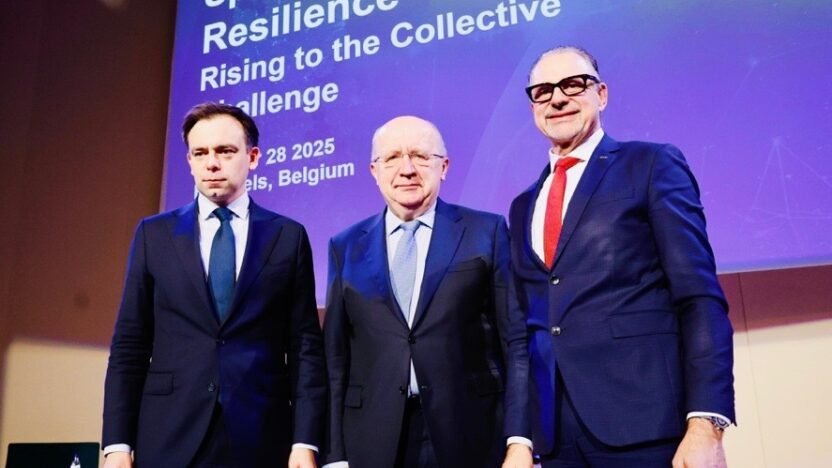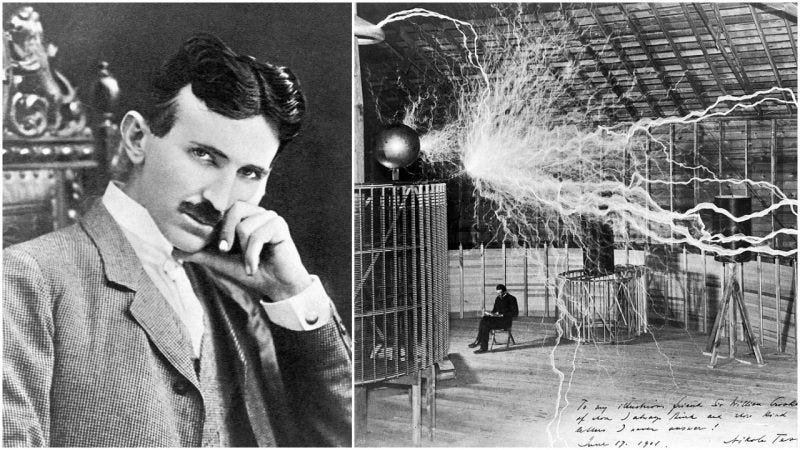Milan — The European Space Agency has refined its plan for the European Resilience from Space (ERS) program, outlining a €1 billion ($1.15 billion) framework that more directly ties Earth observation, telecommunications and navigation to Europe’s growing defense and security needs. The updated proposal will go before member states for approval at the Nov. 26–27 Ministerial Council in Bremen.
The initiative hints at a shift in how the agency envisions its mandate, positioning space systems for dual-use and defense applications rather than purely civilian missions. It also signals a growing alignment between ESA’s civil mission and Europe’s broader security ambitions.
The ERS is ESA’s contribution to the Earth Observation Governmental Service (EOGS), a service strongly backed by the European Commission to provide Europe with dual-use, defense and security-tailored Earth observation capabilities. The EOGS budget itself will not be available until the next Multiannual Financial Framework (MFF) in 2028, but ESA, with a Ministerial approaching, has the opportunity to begin developing its own infrastructure component — the ERS — ahead of the Commission’s allocation.
A “system of systems”
The ERS is conceived as a system of systems integrating Earth Observation (EO), Telecommunications (COM) and PNT (positioning, navigation and timing,). Its core, the ERS-EO component, aims to be highly reactive (with revisit times of around 30 minutes in both radar and optical), dual-use, independent and will include two elements.
The first is a resource-sharing mechanism, a sort of “space carpooling” system that allows member states to use one another’s satellites when under capacity or during periods of increased demand — for example, during emergencies. This approach is not new in Europe; institutional agreements often allow the temporary exchange of space infrastructure among states in cases such as natural disasters.
The second element involves adding new technologies aligned with EOGS objectives, such as high-resolution thermal infrared instruments, onboard artificial intelligence, edge computing and inter-satellite links, to enhance dual-use capabilities.
Budget breakdown and IRIS² integration
The ERS program includes three separate budgets, each corresponding to its main components — EO, telecommunications and navigation — though a unified architecture is under development. The ERS-EO component carries an allocated budget of 750 million euros, while the ERS-NAV component accounts for 250 million euros. The ERS-COM segment consists of two funding tranches, 50 million euros and 150 million euros respectively, both tied to IRIS² and forming part of the 600 million euros that ESA will request from member states for the IRIS² program.
Laurent Jaffart, ESA’s director for communications and secure connectivity, said “IRIS² will be the telecom backbone for all the ERS-EO and ERS-NAV missions.” The system will handle data dissemination from ERS-EO assets, tasking for EO satellites and secure communications relay for PNT missions — “ensuring near-real-time capabilities for both tasking and dissemination” Jaffart told SpaceNews.
The 50 million euro tranche will support upgrades to IRIS² to enable it to function as the telecom backbone for non-telecom missions like ERS-EO and ERS-NAV — for example, satellite tasking beyond line of sight and faster data delivery to users, reducing the cycle from tasking to intelligence, Jaffart explained. The second tranche of 150 million euros will fund technology demonstrations necessary to achieve these capabilities.
Negotiations and next steps
It remains unclear which countries will back the ERS program. ESA Director General Josef Aschbacher noted during the Brussels event, “We are negotiating and discussing with a lot of countries, but it’s too early to say how these negotiations will translate into subscriptions or not.”
The operational model is also still open. As with Copernicus, ESA may eventually hand over the developed assets to the European Commission. “I see my task as ESA to develop the space infrastructure,” said Aschbacher. “It will be a complex one. It will not be an easy exercise, believe me.”
ESA plans to develop the system architecture and initial capacity first, followed by incremental additions and in-orbit demonstration (IOD) missions. The agency aims to launch the first satellite by the end of 2028, before the start of the next EU budget cycle. Budgets have been structured for gradual implementation, allowing nations flexibility in their contributions given existing defense allocations.
Though modest compared to ESA’s total budget request of 22 billion euros, the ERS represents a strategic shift in the agency’s traditional posture. Whereas ESA’s founding convention, which specifies that it serves “peaceful purposes,” does not explicitly exclude defense-related work, the agency has traditionally steered clear of programs explicitly referencing dual-use technology, focusing instead on science and climate-related missions.
The changing geopolitical landscape, coupled with a waning political appetite for environmental and climate issues, now appears to be driving a recalibration to remain relevant to member states’ evolving priorities. Some science programs, which include missions such as Euclid, Gaia and the Solar Orbiter, are mandatory, meaning all member states contribute to them according to GDP.
The real strategic maneuvering, however, lies within the optional programs — where countries can selectively invest, effectively shaping which initiatives move forward and which fade away.
The ERS’s importance, therefore, will be found not in its initial funding size, but in which member states choose to support it. Their participation will reflect both national priorities and attitudes toward ESA’s evolving role in Europe’s defense architecture — whether as a partner in building a collective European space security framework or as a vehicle for advancing individual national strategies.




